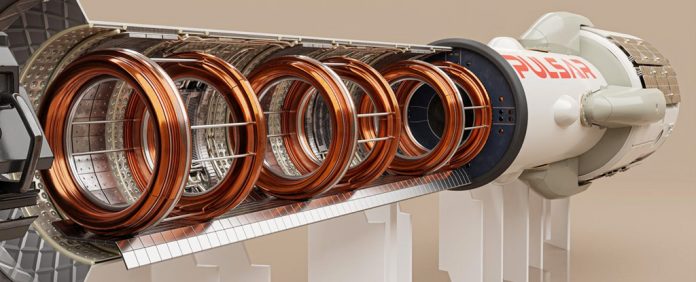The future of space exploration holds immense promise with the advent of nuclear fusion propulsion technology. Its potential to revolutionize space travel lies in the ability to significantly enhance speeds and reduce fuel usage. Harnessing the same powerful reactions that fuel the Sun, this groundbreaking technology could potentially halve travel times to distant destinations like Mars and cut years off journeys to far-off places like Saturn and its moons.
The prospects are undeniably exciting, but not everyone remains convinced about its feasibility. The crux of the matter lies in the technology’s need for ultra-high temperatures and pressures to function effectively.
About Pulsar Fusion
About Pulsar – V6 from Morgan Videos on Vimeo.
To prove the viability of nuclear fusion propulsion, Pulsar Fusion, based in Bletchley, UK, is embarking on an ambitious project to construct the largest fusion rocket engine ever built. The 8-meter-long chamber, scheduled to be operational in 2027, seeks to replicate the conditions necessary for nuclear fusion to occur. Achieving this involves locking ultra-hot plasma within an electromagnetic field in a stable and safe manner.
James Lambert, CFO of Pulsar Fusion, explains the challenges: “Learning how to hold and confine the super-hot plasma within an electromagnetic field is the key difficulty. The plasma behaves like a weather system, making it incredibly hard to predict using conventional techniques.”
In this quest for better predictions and control, machine learning comes to the rescue. Pulsar Fusion has joined forces with Princeton Satellite Systems in the US to leverage supercomputer algorithms, providing valuable insights into the behavior of plasma and aiding precise control.
If all goes as planned, temperatures of several hundred million degrees will be reached in the chamber, surpassing the intensity of the Sun. This surplus energy could potentially propel rockets at astonishing speeds of 500,000 miles (804,672 kilometers) per hour.
At the heart of this revolutionary propulsion system lies the Direct Fusion Drive (DFD), where charged particles directly create thrust without the need for conversion into electricity. The efficiency of the DFD surpasses other options, and its reliance on atomic isotopes makes it less dependent on a massive fuel payload.
Pulsar Fusion CEO Richard Dinan raises a critical question: “Can humanity do fusion?” He emphasizes that if the answer is affirmative, fusion propulsion becomes inevitable, an irresistible force driving the evolution of space exploration.
Beyond making interplanetary round trips more efficient, nuclear fusion also promises to provide nearly limitless and clean energy for life on Earth. Although its first demonstrations are likely to occur in space, where the conditions are more conducive to reactions due to the lack of atmosphere and ultra-cold temperatures, the potential applications on our planet are equally promising.
The journey towards nuclear fusion propulsion represents a leap forward in human ingenuity, paving the way for unparalleled space exploration and clean energy solutions. As scientists continue their pursuit of this revolutionary technology, the future of space travel and our understanding of the cosmos are set to be forever transformed.
More From Pulsar




